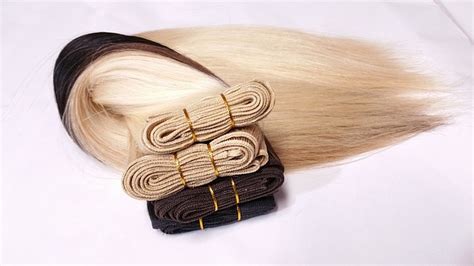Introduction
Hair extensions have become increasingly popular as a way to add volume, length, and style to one’s natural hair. Two of the most common types of hair extensions are frontals and closures. While both methods offer unique benefits, there are key differences between the two that potential users should consider before making a decision.

What is a Frontal?
A frontal is a hair extension that covers the entire front hairline from ear to ear. It is typically made with lace or mesh material and is attached to the scalp using adhesive or clips. Frontals provide a natural-looking, seamless transition between natural hair and extensions, making them a popular choice for those looking for a more versatile and realistic look.
What is a Closure?
A closure is a smaller hair extension that covers only the top or crown of the head. It is also made with lace or mesh material and is attached to the scalp using adhesive or clips. Closures are less noticeable than frontals and are a good option for those who want to add volume or length without altering their entire hairline.
Benefits of Frontals
- Natural-looking: Frontals offer a seamless transition between natural hair and extensions, creating a realistic look.
- Versatile: Frontals can be styled in a variety of ways, allowing users to customize their look.
- Protective: Frontals can help protect natural hair from damage caused by heat styling or chemical treatments.
Benefits of Closures
- Less noticeable: Closures are smaller than frontals, making them less visible and more discreet.
- Affordable: Closures are typically less expensive than frontals, making them a more budget-friendly option.
- Easy to maintain: Closures require less maintenance than frontals, making them a good choice for busy individuals.
Comparison Table: Frontals vs. Closures
| Feature | Frontal | Closure |
|---|---|---|
| Coverage | Full hairline | Top or crown |
| Appearance | Natural-looking | Less noticeable |
| Cost | More expensive | Less expensive |
| Maintenance | Requires more maintenance | Requires less maintenance |
| Versatility | More versatile | Less versatile |
How to Choose Between a Frontal and a Closure
The best way to choose between a frontal and a closure is to consider your individual needs and preferences. Ask yourself the following questions:
- What is your budget?
- How much time are you willing to spend on maintenance?
- What level of coverage do you want?
- How important is a natural-looking appearance?
Once you have answered these questions, you can make an informed decision about which type of hair extension is right for you.
Pain Points and Motivations
Pain Points
- Frontals can be more expensive than closures.
- Frontals require more maintenance than closures.
- Frontals can be more difficult to style than closures.
Motivations
- Frontals offer a more natural-looking appearance than closures.
- Frontals are more versatile than closures.
- Frontals can help protect natural hair from damage.
Applications for Frontals and Closures
Frontals and closures can be used in a variety of applications, including:
- Adding volume to fine or thin hair
- Lengthening short hair
- Adding highlights or lowlights
- Creating a more dramatic look
- Protecting natural hair from damage
FAQs
1. How long do frontals and closures last?
With proper care and maintenance, frontals and closures can last up to 6 months.
2. How much do frontals and closures cost?
The cost of frontals and closures varies depending on the type of hair, length, and construction. However, you can expect to pay anywhere from $100 to $1,000 for a quality frontal or closure.
3. Can I install a frontal or closure myself?
Installing a frontal or closure is a complex process that is best left to a professional hairstylist.
4. How do I care for my frontal or closure?
To care for your frontal or closure, follow these steps:
- Wash it regularly with a sulfate-free shampoo and conditioner.
- Avoid using heat styling tools on high heat settings.
- Moisturize it regularly with a leave-in conditioner or oil.
- Avoid sleeping with your frontal or closure wet.
5. Can I wear my frontal or closure every day?
Yes, you can wear your frontal or closure every day. However, it is important to remove it and clean it regularly to prevent build-up and damage.
6. Can I swim or exercise with my frontal or closure?
Yes, you can swim or exercise with your frontal or closure. However, it is important to wear a swim cap or headband to protect it from damage.
Conclusion
Frontals and closures are both excellent options for adding volume, length, and style to hair. While frontals offer a more natural-looking and versatile appearance, closures are more affordable and require less maintenance. By understanding the differences between the two, you can make an informed decision about which type of hair extension is right for you.
